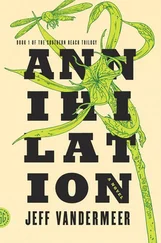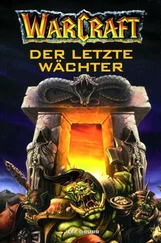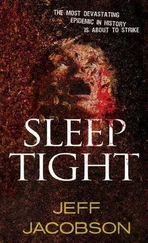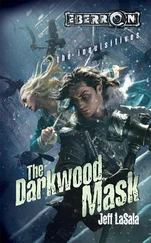Jeff Molofee - NeHe's OpenGL Tutorials
Здесь есть возможность читать онлайн «Jeff Molofee - NeHe's OpenGL Tutorials» весь текст электронной книги совершенно бесплатно (целиком полную версию без сокращений). В некоторых случаях можно слушать аудио, скачать через торрент в формате fb2 и присутствует краткое содержание. Жанр: Программирование, на английском языке. Описание произведения, (предисловие) а так же отзывы посетителей доступны на портале библиотеки ЛибКат.
- Название:NeHe's OpenGL Tutorials
- Автор:
- Жанр:
- Год:неизвестен
- ISBN:нет данных
- Рейтинг книги:3 / 5. Голосов: 1
-
Избранное:Добавить в избранное
- Отзывы:
-
Ваша оценка:
- 60
- 1
- 2
- 3
- 4
- 5
NeHe's OpenGL Tutorials: краткое содержание, описание и аннотация
Предлагаем к чтению аннотацию, описание, краткое содержание или предисловие (зависит от того, что написал сам автор книги «NeHe's OpenGL Tutorials»). Если вы не нашли необходимую информацию о книге — напишите в комментариях, мы постараемся отыскать её.
NeHe's OpenGL Tutorials — читать онлайн бесплатно полную книгу (весь текст) целиком
Ниже представлен текст книги, разбитый по страницам. Система сохранения места последней прочитанной страницы, позволяет с удобством читать онлайн бесплатно книгу «NeHe's OpenGL Tutorials», без необходимости каждый раз заново искать на чём Вы остановились. Поставьте закладку, и сможете в любой момент перейти на страницу, на которой закончили чтение.
Интервал:
Закладка:
0, // Shift Bit Ignored
0, // No Accumulation Buffer
0, 0, 0, 0, // Accumulation Bits Ignored
16, // 16Bit Z-Buffer (Depth Buffer)
0, // No Stencil Buffer
0, // No Auxiliary Buffer
PFD_MAIN_PLANE, // Main Drawing Layer
0, // Reserved
0, 0, 0 // Layer Masks Ignored
};
If there were no errors while creating the window, we'll attempt to get an OpenGL Device Context. If we can't get a DC an error message will pop onto the screen, and the program will quit (return FALSE).
if (!(hDC=GetDC(hWnd))) // Did We Get A Device Context?
{
KillGLWindow(); // Reset The Display
MessageBox(NULL,"Can't Create A GL Device Context.", "ERROR", MB_OK|MB_ICONEXCLAMATION);
return FALSE; // Return FALSE
}
If we managed to get a Device Context for our OpenGL window we'll try to find a pixel format that matches the one we described above. If Windows can't find a matching pixel format, an error message will pop onto the screen and the program will quit (return FALSE).
if (!(PixelFormat=ChoosePixelFormat(hDC,&pfd))) // Did Windows Find A Matching Pixel Format?
{
KillGLWindow(); // Reset The Display
MessageBox(NULL,"Can't Find A Suitable PixelFormat.", "ERROR", MB_OK|MB_ICONEXCLAMATION);
return FALSE; // Return FALSE
}
If windows found a matching pixel format we'll try setting the pixel format. If the pixel format cannot be set, an error message will pop up on the screen and the program will quit (return FALSE).
if(!SetPixelFormat(hDC, PixelFormat, &pfd)) // Are We Able To Set The Pixel Format?
{
KillGLWindow(); // Reset The Display
MessageBox(NULL,"Can't Set The PixelFormat.", "ERROR", MB_OK|MB_ICONEXCLAMATION);
return FALSE; // Return FALSE
}
If the pixel format was set properly we'll try to get a Rendering Context. If we can't get a Rendering Context an error message will be displayed on the screen and the program will quit (return FALSE).
if (!(hRC=wglCreateContext(hDC))) // Are We Able To Get A Rendering Context?
{
KillGLWindow(); // Reset The Display
MessageBox(NULL,"Can't Create A GL Rendering Context.", "ERROR", MB_OK|MB_ICONEXCLAMATION);
return FALSE; // Return FALSE
}
If there have been no errors so far, and we've managed to create both a Device Context and a Rendering Context all we have to do now is make the Rendering Context active. If we can't make the Rendering Context active an error message will pop up on the screen and the program will quit (return FALSE).
if (!wglMakeCurrent(hDC, hRC)) // Try To Activate The Rendering Context
{
KillGLWindow(); // Reset The Display
MessageBox(NULL,"Can't Activate The GL Rendering Context.", "ERROR", MB_OK|MB_ICONEXCLAMATION);
return FALSE; // Return FALSE
}
If everything went smoothly, and our OpenGL window was created we'll show the window, set it to be the foreground window (giving it more priority) and then set the focus to that window. Then we'll call ReSizeGLScene passing the screen width and height to set up our perspective OpenGL screen.
ShowWindow(hWnd,SW_SHOW); // Show The Window
SetForegroundWindow(hWnd); // Slightly Higher Priority
SetFocus(hWnd); // Sets Keyboard Focus To The Window
ReSizeGLScene(width, height); // Set Up Our Perspective GL Screen
Finally we jump to InitGL() where we can set up lighting, textures, and anything else that needs to be setup. You can do your own error checking in InitGL(), and pass back TRUE (everythings OK) or FALSE (somethings not right). For example, if you were loading textures in InitGL() and had an error, you may want the program to stop. If you send back FALSE from InitGL() the lines of code below will see the FALSE as an error message and the program will quit.
if (!InitGL()) // Initialize Our Newly Created GL Window
{
KillGLWindow(); // Reset The Display
MessageBox(NULL, "Initialization Failed.", "ERROR", MB_OK|MB_ICONEXCLAMATION);
return FALSE; // Return FALSE
}
If we've made it this far, it's safe to assume the window creation was successful. We return TRUE to WinMain() telling WinMain() there were no errors. This prevents the program from quitting.
return TRUE; // Success
}
This is where all the window messages are dealt with. When we registred the Window Class we told it to jump to this section of code to deal with window messages.
LRESULT CALLBACK WndProc( HWND hWnd, // Handle For This Window
UINT uMsg, // Message For This Window
WPARAM wParam, // Additional Message Information
LPARAM lParam) // Additional Message Information
{
The code below sets uMsg as the value that all the case statements will be compared to. uMsg will hold the name of the message we want to deal with.
switch (uMsg) // Check For Windows Messages
{
if uMsg is WM_ACTIVE we check to see if our window is still active. If our window has been minimized the variable active will be FALSE. If our window is active, the variable active will be TRUE.
case WM_ACTIVATE: // Watch For Window Activate Message
{
if (!HIWORD(wParam)) // Check Minimization State
{
active=TRUE; // Program Is Active
} else {
active=FALSE; // Program Is No Longer Active
}
return 0; // Return To The Message Loop
}
If the message is WM_SYSCOMMAND (system command) we'll compare wParam against the case statements. If wParam is SC_SCREENSAVE or SC_MONITORPOWER either a screensaver is trying to start or the monitor is trying to enter power saving mode. By returning 0 we prevent both those things from happening.
case WM_SYSCOMMAND: // Intercept System Commands
{
switch (wParam) // Check System Calls
{
case SC_SCREENSAVE: // Screensaver Trying To Start?
case SC_MONITORPOWER: // Monitor Trying To Enter Powersave?
return 0; // Prevent From Happening
}
break; // Exit
}
If uMsg is WM_CLOSE the window has been closed. We send out a quit message that the main loop will intercept. The variable done will be set to TRUE, the main loop in WinMain() will stop, and the program will close.
case WM_CLOSE: // Did We Receive A Close Message?
{
PostQuitMessage(0); // Send A Quit Message
return 0; // Jump Back
}
If a key is being held down we can find out what key it is by reading wParam. I then make that keys cell in the array keys[ ] become TRUE. That way I can read the array later on and find out which keys are being held down. This allows more than one key to be pressed at the same time.
case WM_KEYDOWN: // Is A Key Being Held Down?
{
keys[wParam] = TRUE; // If So, Mark It As TRUE
Интервал:
Закладка:
Похожие книги на «NeHe's OpenGL Tutorials»
Представляем Вашему вниманию похожие книги на «NeHe's OpenGL Tutorials» списком для выбора. Мы отобрали схожую по названию и смыслу литературу в надежде предоставить читателям больше вариантов отыскать новые, интересные, ещё непрочитанные произведения.
Обсуждение, отзывы о книге «NeHe's OpenGL Tutorials» и просто собственные мнения читателей. Оставьте ваши комментарии, напишите, что Вы думаете о произведении, его смысле или главных героях. Укажите что конкретно понравилось, а что нет, и почему Вы так считаете.








